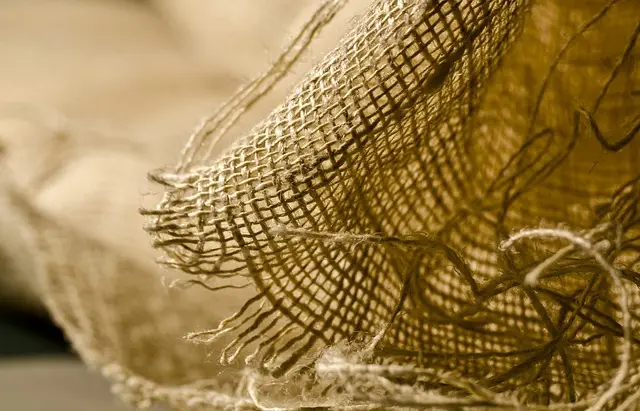Kratom, often likened to a 'candy shop' for its array of strains and effects, is an herbal remedy from Southeast Asia that has garnered attention for its potential to alleviate muscle soreness. Its active compounds, mitragynine and 7-hydroxymitragynine, interact with opioid receptors to provide pain relief. Strains like Maeng Da are known for their energizing and analgesic properties without sedation, while Bali kratom is sedating and ideal for relaxation. Red Vein strains offer a balance of energy and tranquility. It's important to approach kratom with caution due to its potency and varying user responses; precise dosing and strain selection are critical for safe and effective pain management. Due to its interaction with the brain, kratom is not universally suitable, particularly for those with substance abuse issues or certain medical conditions. It's essential to consult a healthcare professional before using kratom, especially if on other medications or managing health concerns. For those considering kratom, it's important to source it from reputable vendors to ensure purity and legality, much like selecting quality candies from a trusted candy shop.
Muscle soreness can be a relentless foe, often leaving individuals yearning for effective relief. Enter the ‘Candy Shop’ of herbal remedies where kratom emerges as a potential ally in managing this discomfort. This article delves into the therapeutic properties of kratom and how it can be a viable option for those experiencing muscle soreness. We will guide you through the diverse strains of kratom available, each offering unique benefits, and provide dosing guidelines to safely harness its analgesic effects. Discover the sweet spot where kratom meets your muscle relief needs.
- Unwrapping the Relief: Muscle Soreness and Kratom's Role in the 'Candy Shop' of Herbal Remedies
- Navigating the Shelves: Understanding Kratom Strains and Their Impact on Muscle Soreness
- The Sweet Spot: Dosing Guidelines and Precautions for Muscle Soreness Relief with Kratom
Unwrapping the Relief: Muscle Soreness and Kratom's Role in the 'Candy Shop' of Herbal Remedies

Unraveling the complex relationship between muscle soreness and natural remedies, kratom emerges as a potential ally for those seeking relief. Often dubbed the ‘Candy Shop’ of herbal remedies due to the wide array of strains and alkaloid profiles available, kratom has been traditionally used in Southeast Asian cultures for its various medicinal properties. Among these, its effects on pain management have garnered significant attention. When it comes to muscle soreness, whether from intense physical activity, chronic conditions, or acute injuries, kratom’s active compounds, mitragynine and 7-hydroxymitragynine, are believed to interact with the body’s opioid receptors, providing a soothing effect that can alleviate discomfort. The ‘Candy Shop’ metaphor is fitting for the vast selection of kratom strains; each offering a different balance of effects that can range from mild analgesia to more potent pain-relieving benefits. Users often report a sense of well-being and reduced perception of pain after consuming kratom, making it a popular choice in the herbal remedy space for muscle soreness relief. It’s important to approach kratom with caution, however, as its effects can be quite potent and individual responses may vary; dosage and strain selection are key factors in optimizing its use for pain management. As with any natural or pharmaceutical intervention, consulting a healthcare provider is essential before integrating kratom into one’s health regimen to ensure safe and effective use.
Navigating the Shelves: Understanding Kratom Strains and Their Impact on Muscle Soreness

When exploring the shelves for natural remedies to muscle soreness, one may feel like they’ve stumbled upon a whimsical ‘candy shop’ with an array of kratom strains. Kratom, a tropical tree native to Southeast Asia, has gained popularity due to its potential effects on pain relief and muscle soreness. Among the plethora of kratom varieties available, each strain offers distinct alkaloid profiles that contribute to different experiences and outcomes for the user. For instance, Maeng Da kratom is renowned for its invigorating and pain-relieving qualities, often favored by those seeking relief from muscle soreness without the sedative effects commonly associated with other strains. On the other hand, Bali kratom is known for its more sedating properties, which can be beneficial for deep relaxation, aiding in the reduction of muscle tension and discomfort. Red Vein strains, such as Red Borneo or Red Thai, are also popular among those looking to alleviate soreness, offering a balance between energy and calmness. Understanding these nuances is crucial for individuals seeking to harness kratom’s potential benefits for muscle soreness relief, much like discerning the variety of candies in a confectioner’s shop to satisfy a specific sweet tooth. It’s important to approach the selection of kratom strains with care, considering personal tolerance and desired effects, to navigate this ‘candy shop’ effectively and responsibly for muscle soreness relief.
The Sweet Spot: Dosing Guidelines and Precautions for Muscle Soreness Relief with Kratom

When exploring the potential benefits of kratom for muscle soreness relief, it’s crucial to navigate the fine line between an effective dose and an amount that could lead to adverse effects. Kratom, a botanical from Southeast Asia, has been traditionally used in its region of origin for pain management, and more recently, in various parts of the world as an alternative remedy. For those seeking muscle soreness relief, the ‘sweet spot’ dosage can vary widely depending on individual tolerance, physiology, and the specific strain of kratom used. Generally speaking, a moderate dose is often recommended as a starting point for pain relief, with effects that might be felt within 10 to 30 minutes after ingestion. It’s important to start low and go slow, as overconsumption can lead to unwanted side effects.
Precautions are paramount when incorporating kratom into your wellness routine. Because kratom interacts with opioid receptors in the brain, it’s not suitable for everyone, particularly those with a history of substance abuse or certain medical conditions. Additionally, dosing must be precise to avoid overstimulation or sedation, both of which can be uncomfortable and counterproductive to the intended relief. Always consult with a healthcare provider before integrating kratom into your regimen, especially if you are taking other medications or have pre-existing health concerns. Remember to source kratom from reputable vendors, ensuring purity and adherence to legal standards, much like one would select their favorite confections from a trusted candy shop. This due diligence will help maintain the integrity of your wellness journey and support the responsible use of this natural compound.
In concluding our exploration of natural remedies for muscle soreness, it’s clear that kratom, often likened to a ‘candy shop’ due to its array of strains, offers a promising avenue for relief. By delving into the specific effects of various kratom strains and establishing appropriate dosing guidelines, individuals can now navigate this herbal landscape with greater confidence and efficacy. While it’s crucial to approach any new supplement with caution and adherence to recommended dosages, the potential benefits of kratom for muscle soreness make it a compelling option in the broader context of alternative therapies. Users are advised to consult healthcare professionals before incorporating kratom into their wellness regimen, ensuring safe and informed use.






